Mercedes reveals prices for the EQT and eCitan
Mercedes-Benz Vans has presented its new all-electric models EQT as a van primarily for private customers and eCitan as a van for the commercial sector. Both will soon be available for order – in the case of the eCitan with some delay.
Mercedes-Benz Vans had already presented the current Citan generation in August 2021. The internal combustion models have been available for order since then, for the eCitan the order start was initially announced for the second half of 2022 – which has now stretched far into the first half of 2023 or possibly even into the second half of 2023. The order launch has not yet taken place, it has only been announced “in the near future”.
However, Mercedes-Benz Vans has already announced the first prices for the German market: the EQT will start here at gross list prices from around 49,000 euros, the eCitan from around 36,000 euros net (42,840 euros gross). When looking at the price differences, it should be noted that the EQT is better equipped ex-works – among other things, the heat pump is on board here as standard, whereas it is optional in the eCitan. With further features in the charging technology (see below), the price difference between a basic eCitan and the EQT melts away.
Both EQT and eCitan come with a 90 kW engine and a battery with a usable capacity of 45 kWh. This has been known for a long time, after all, both the electric and the combustion versions are based on the Renault Kangoo, which has been on the market for a while with just that 90 kW electric drive. The Nissan Townstar EV is the third model in the line-up to use this drive.
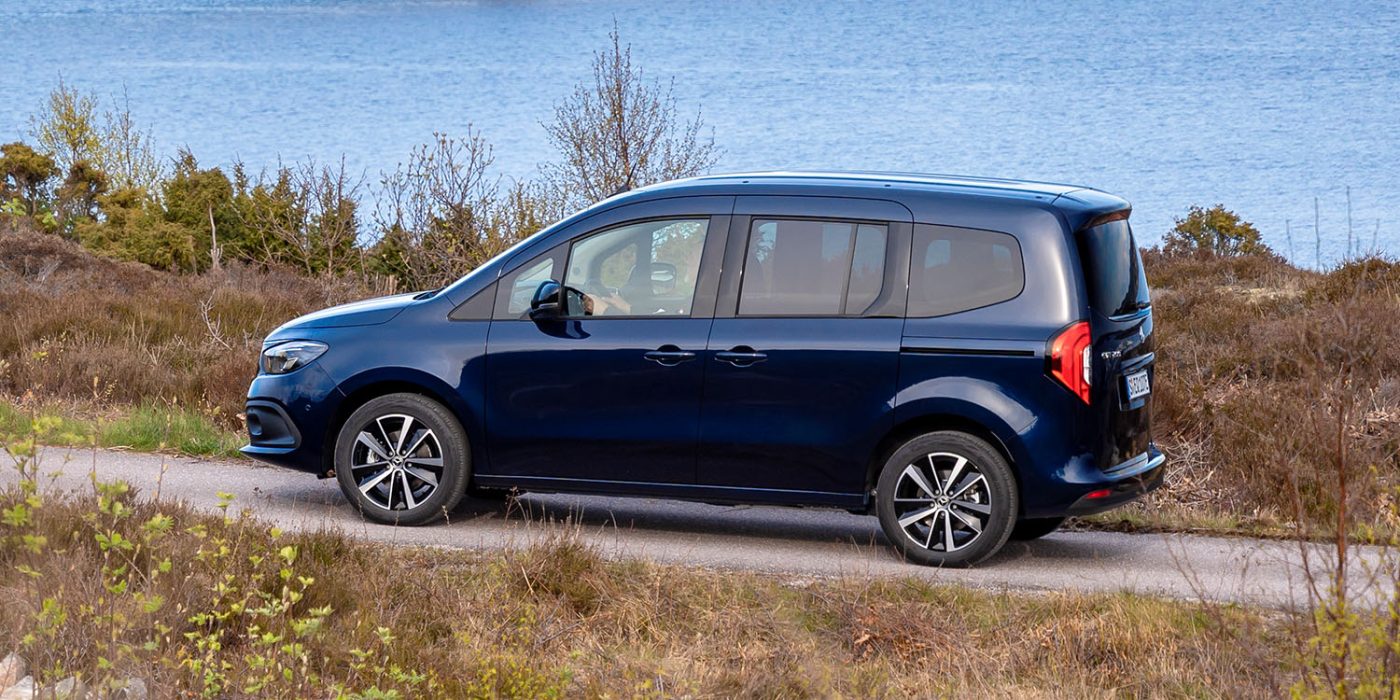
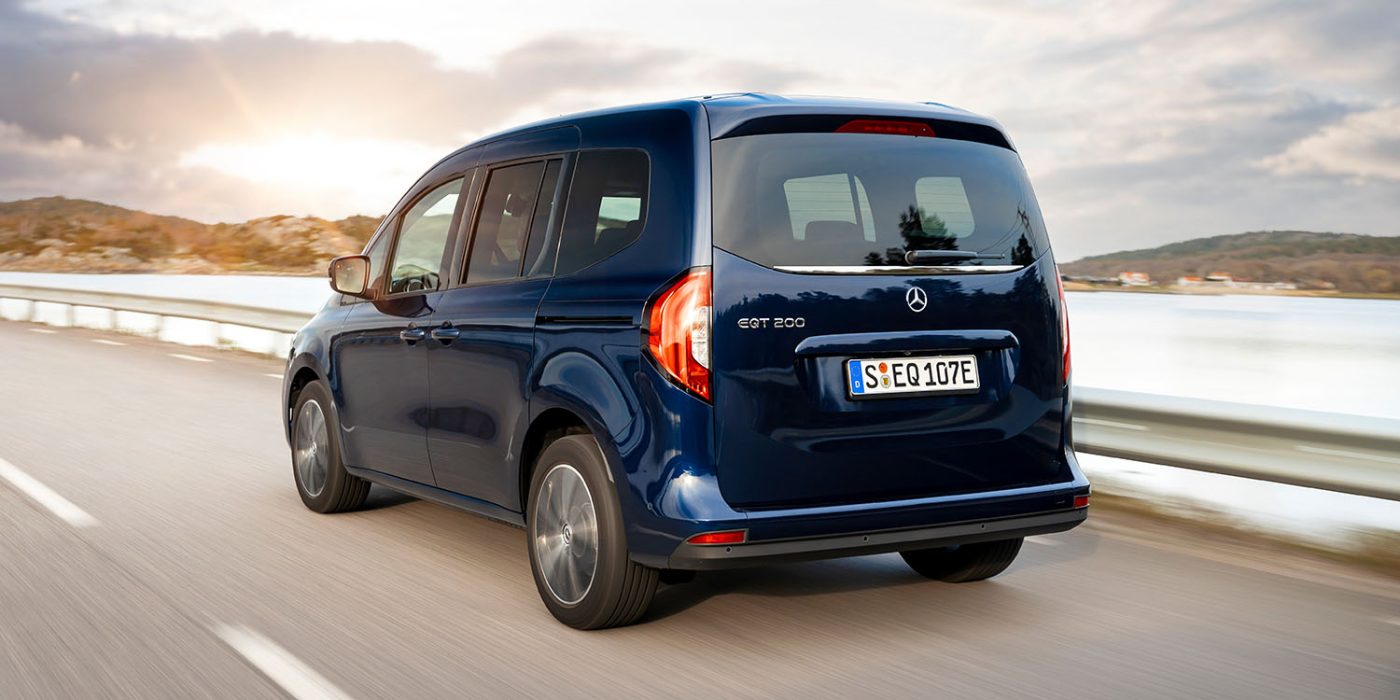
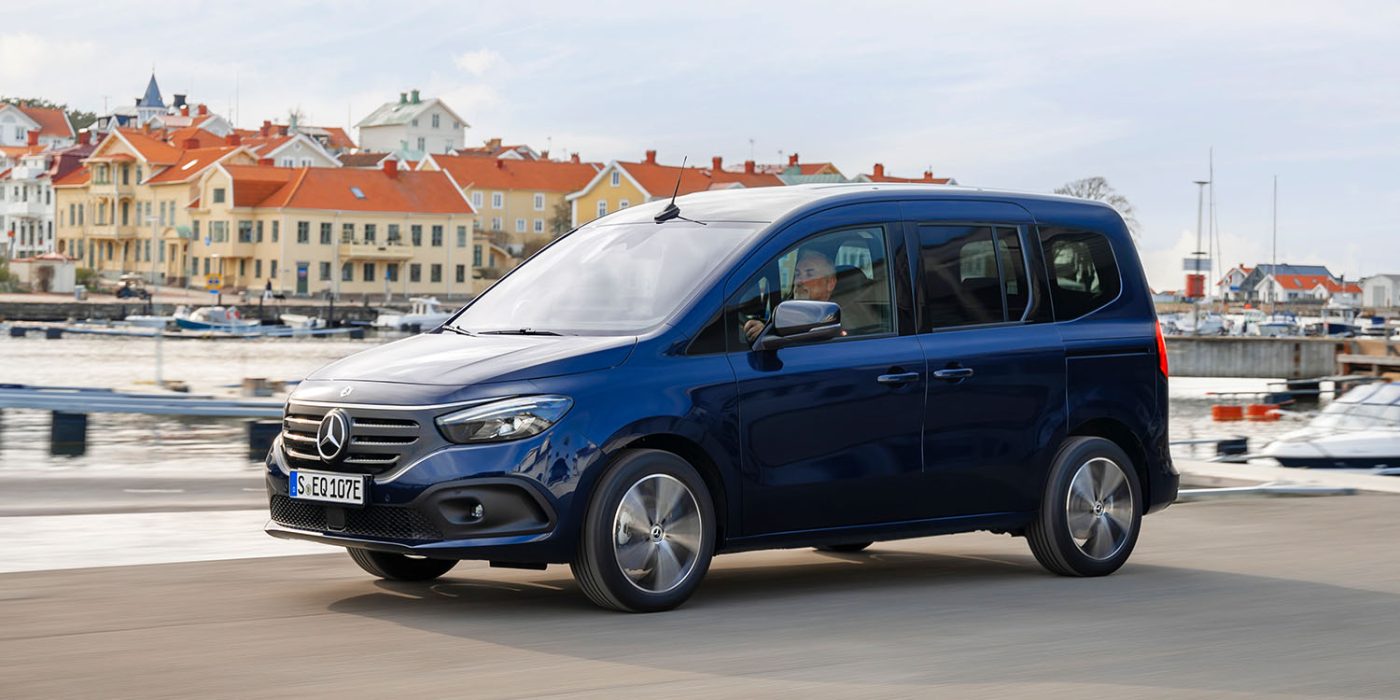
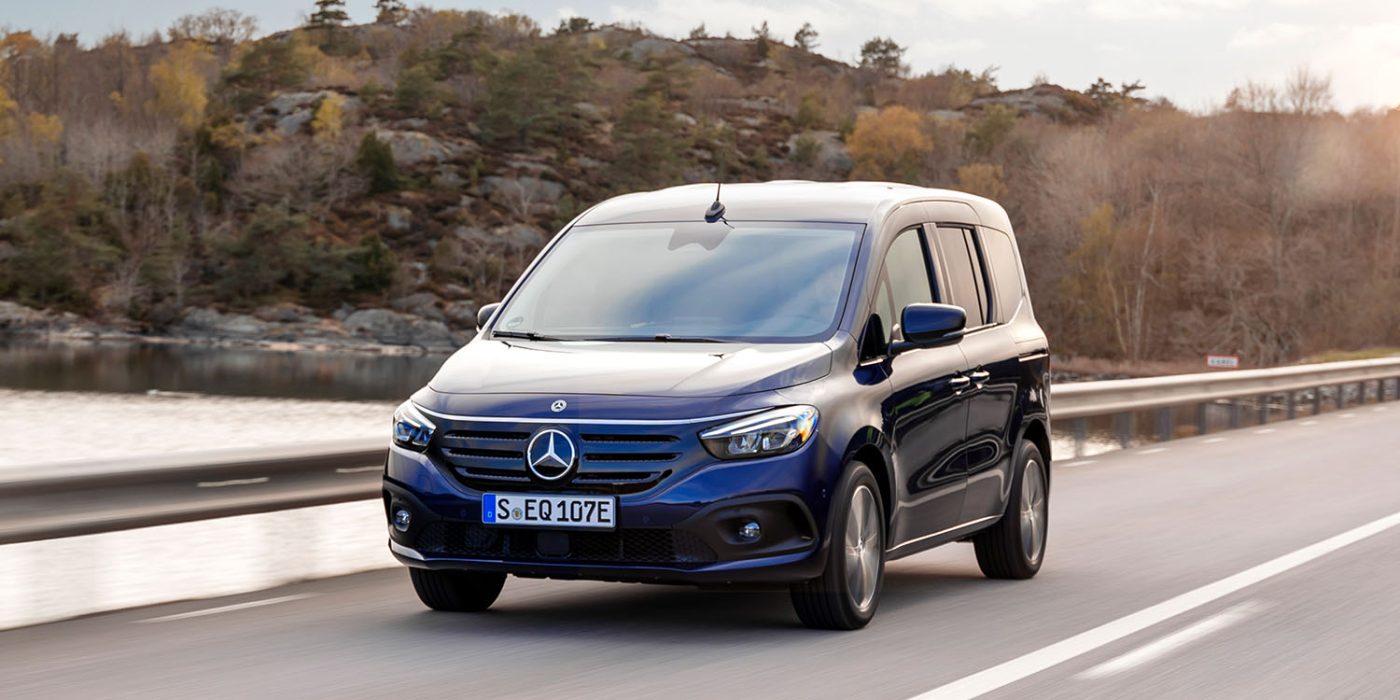
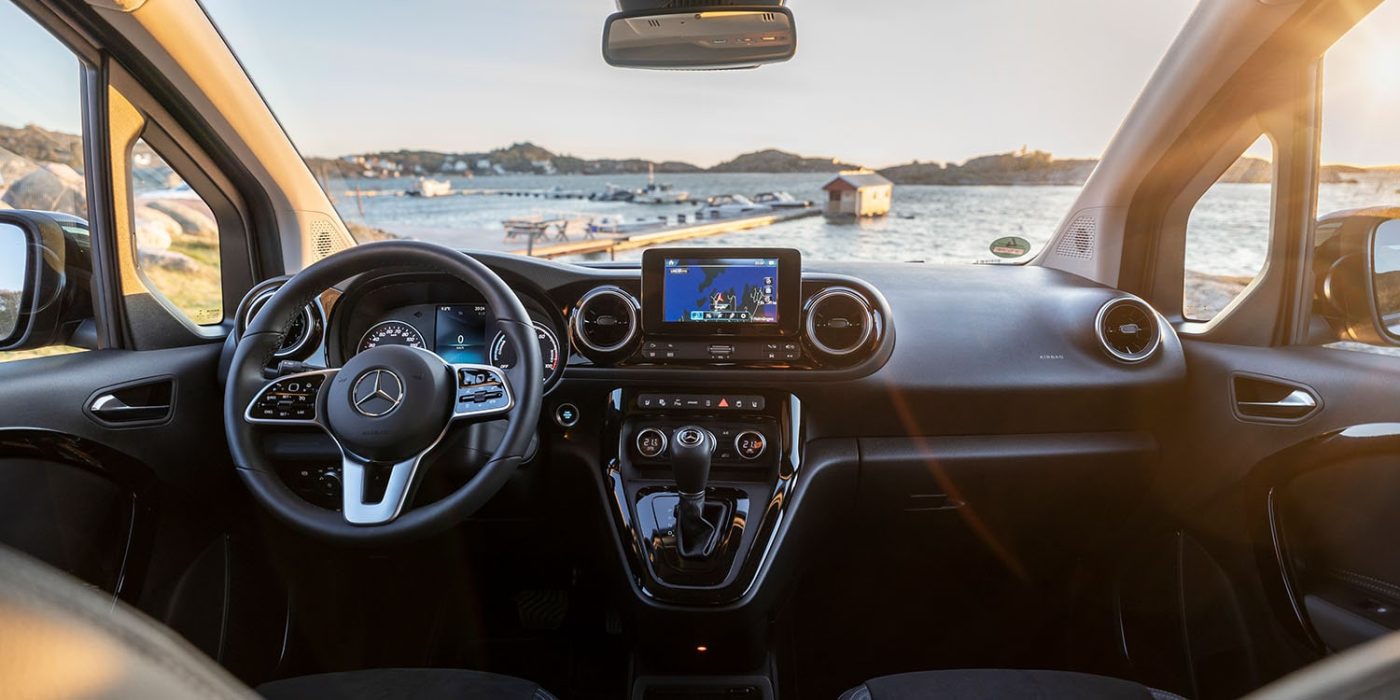
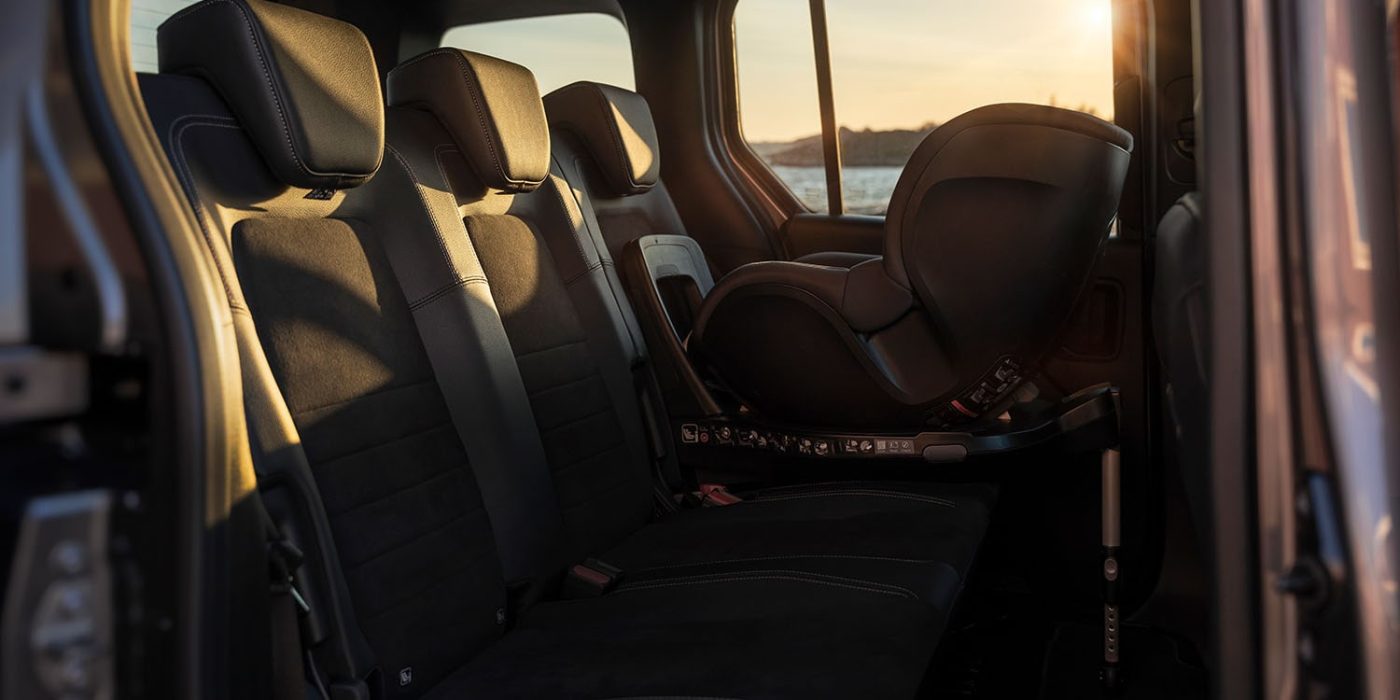
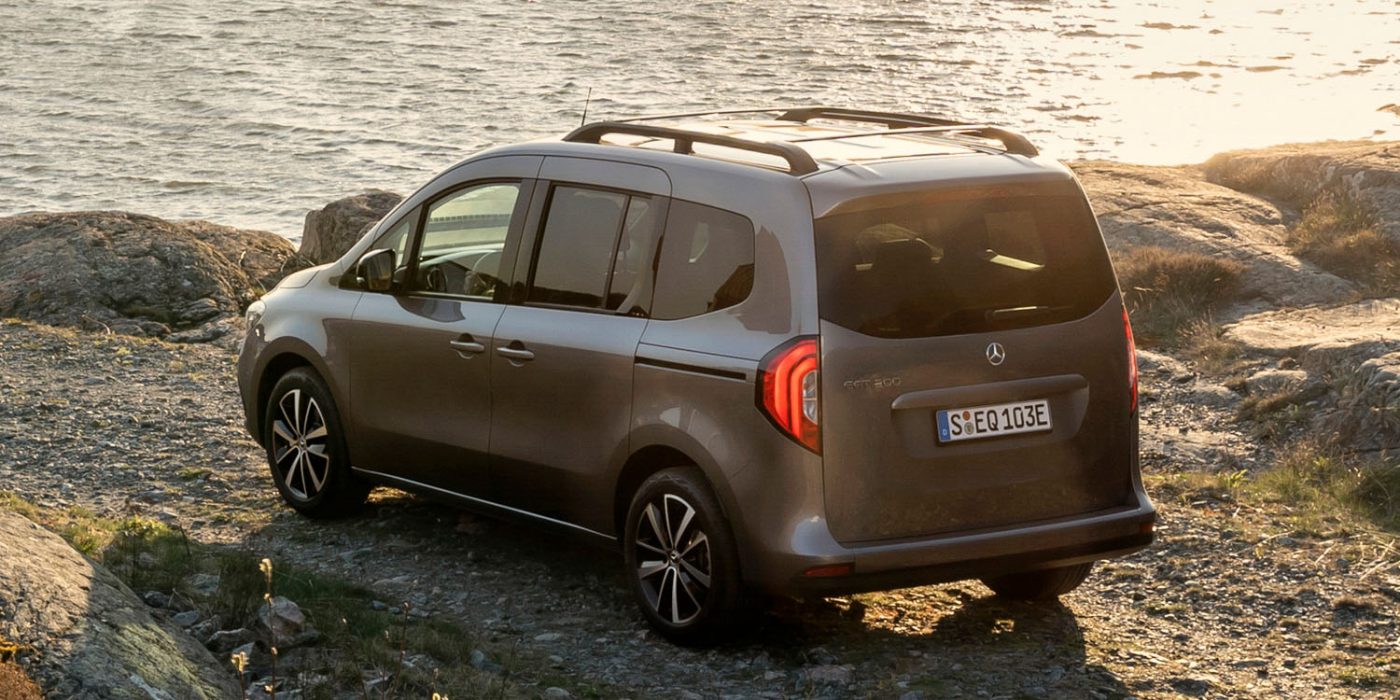
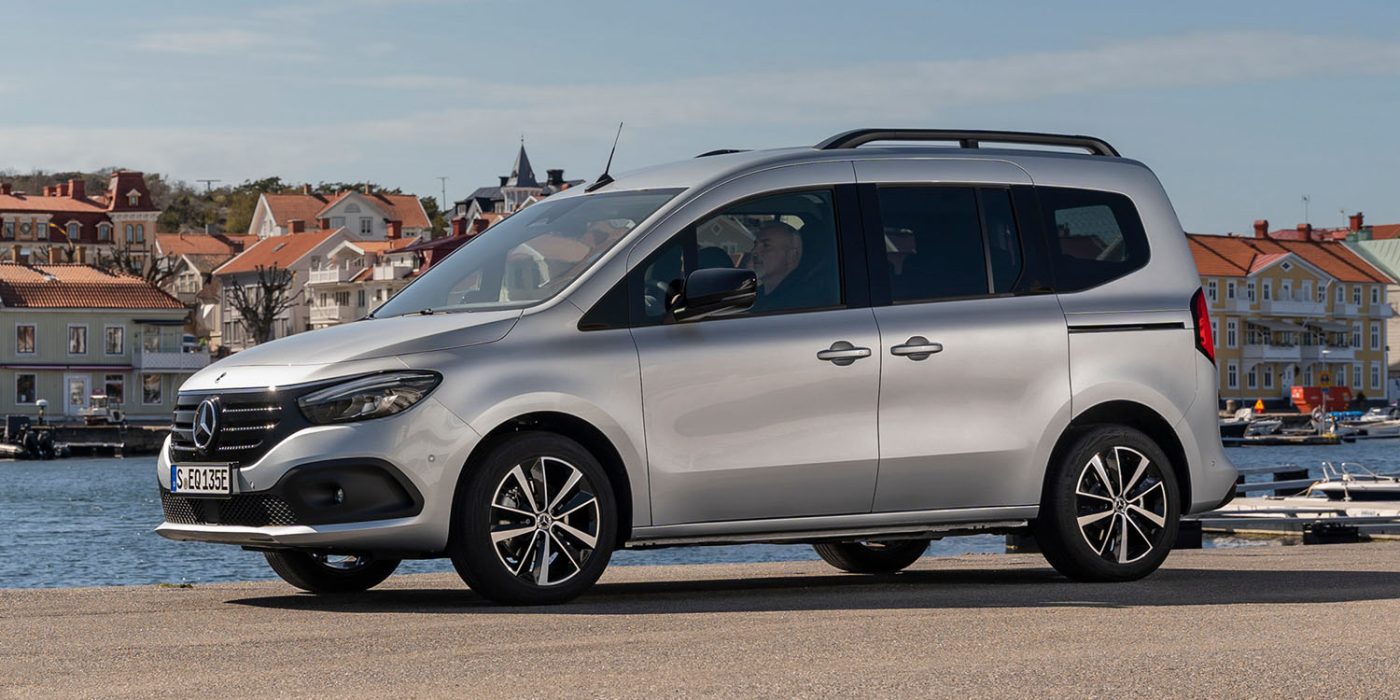
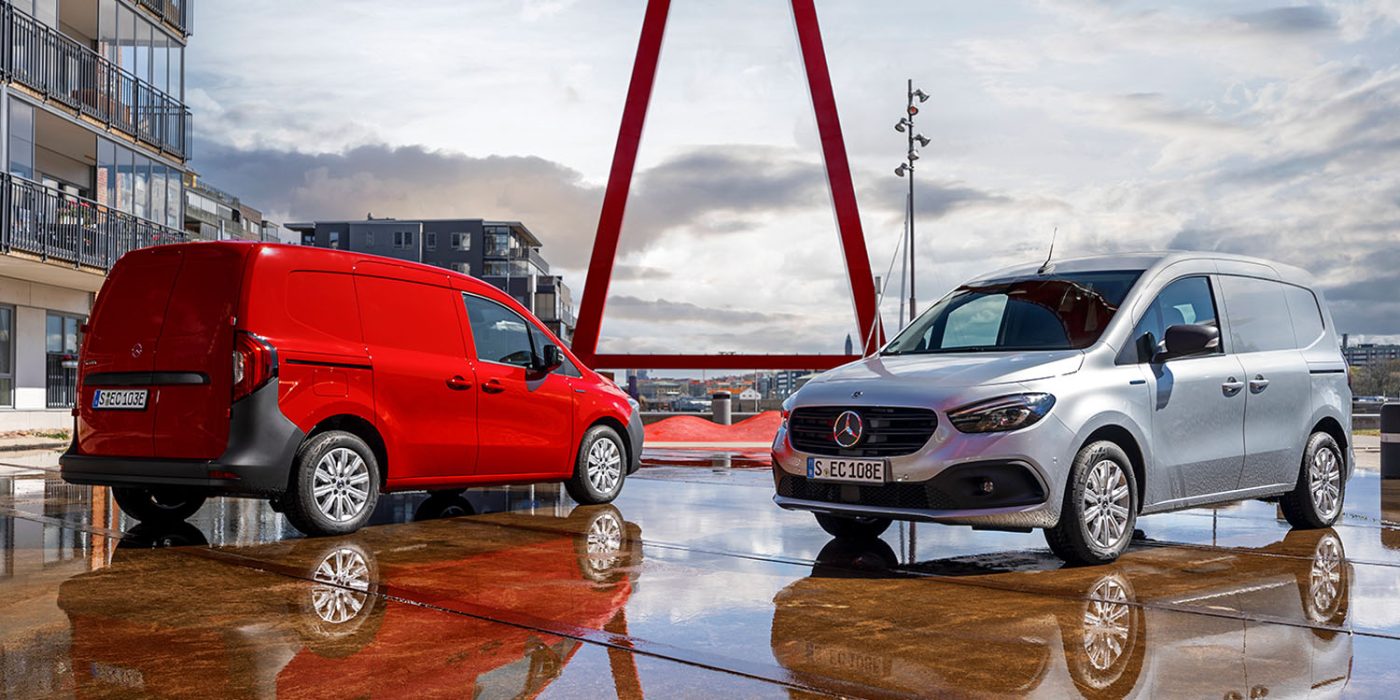
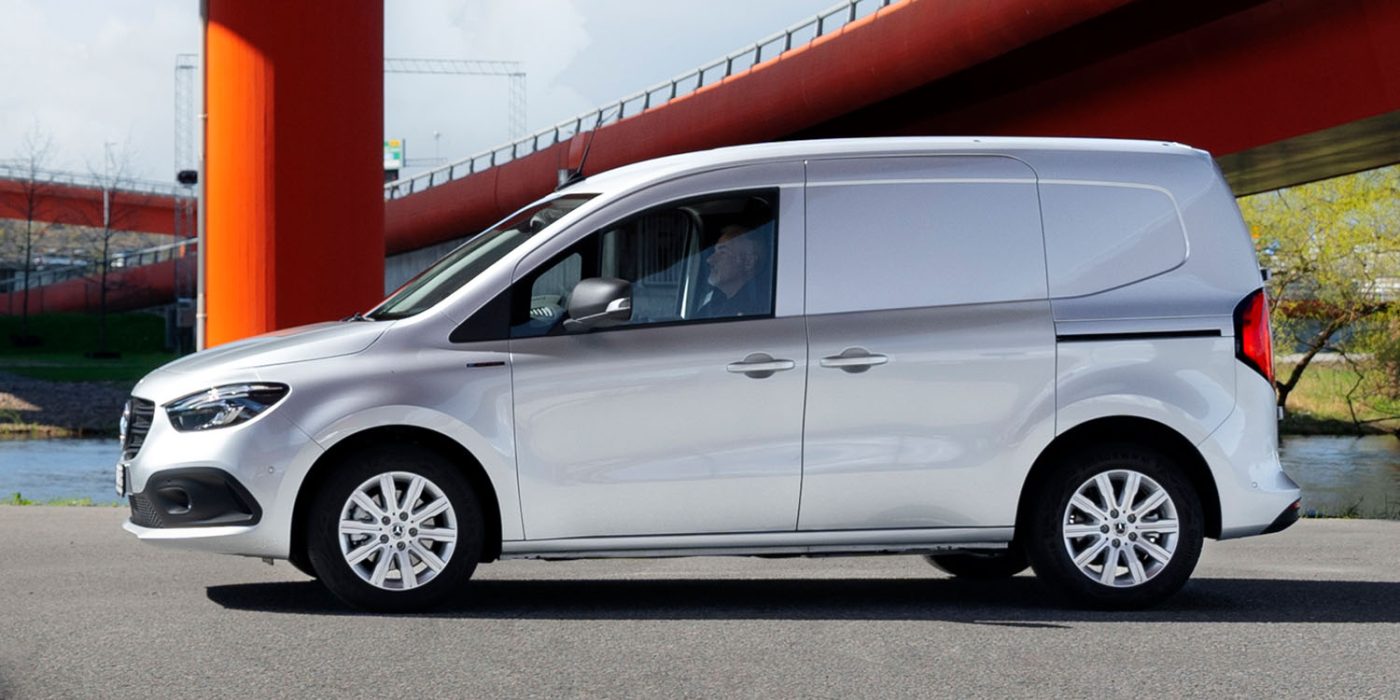
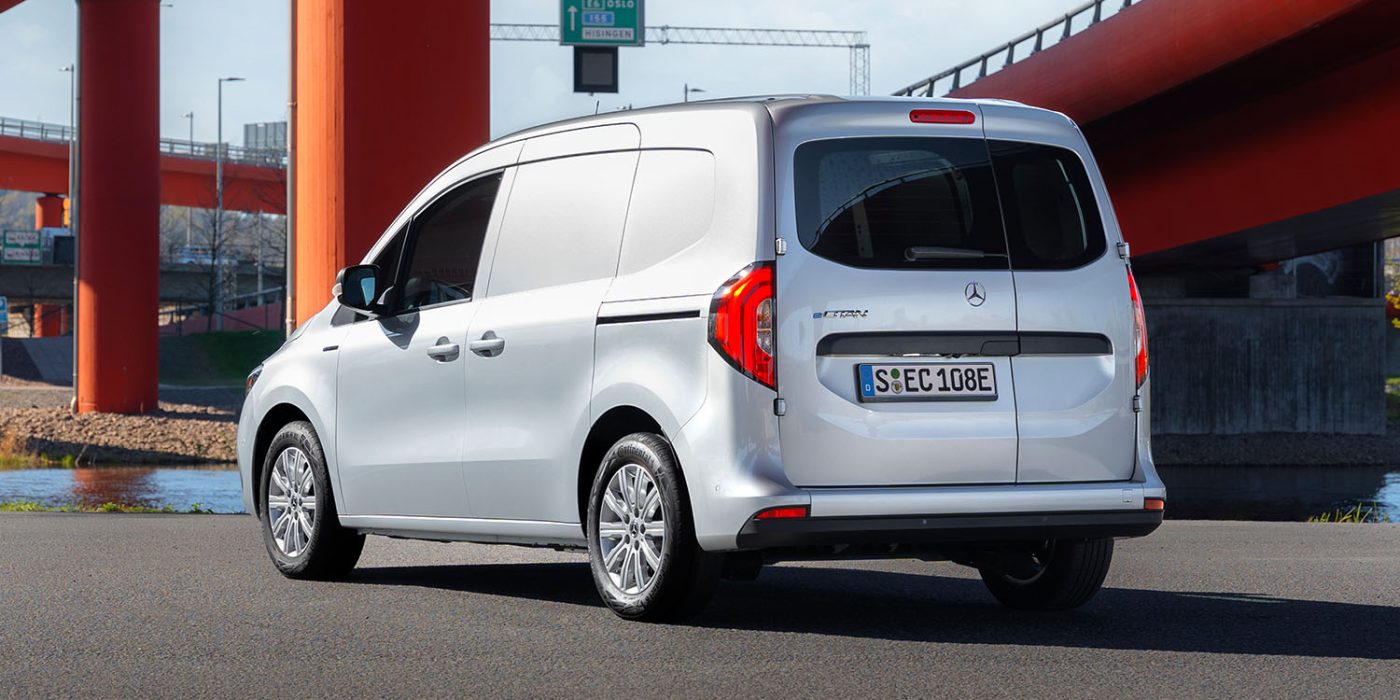
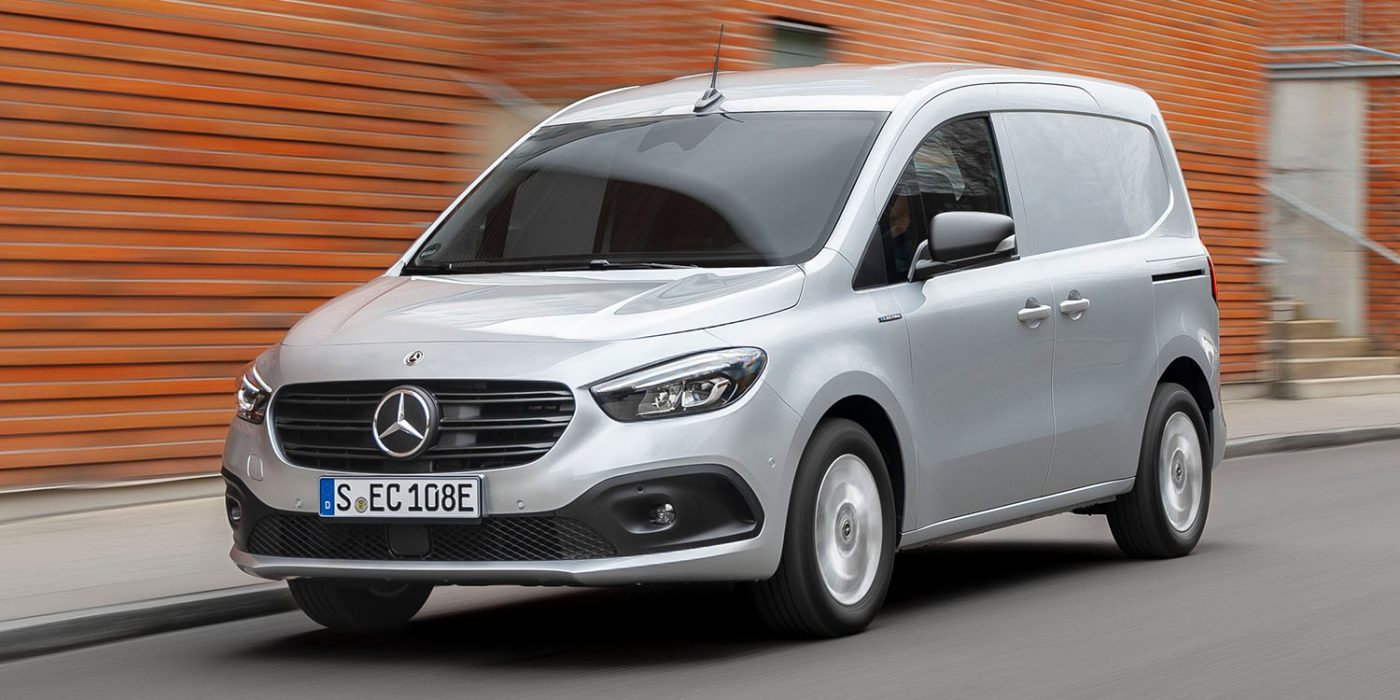
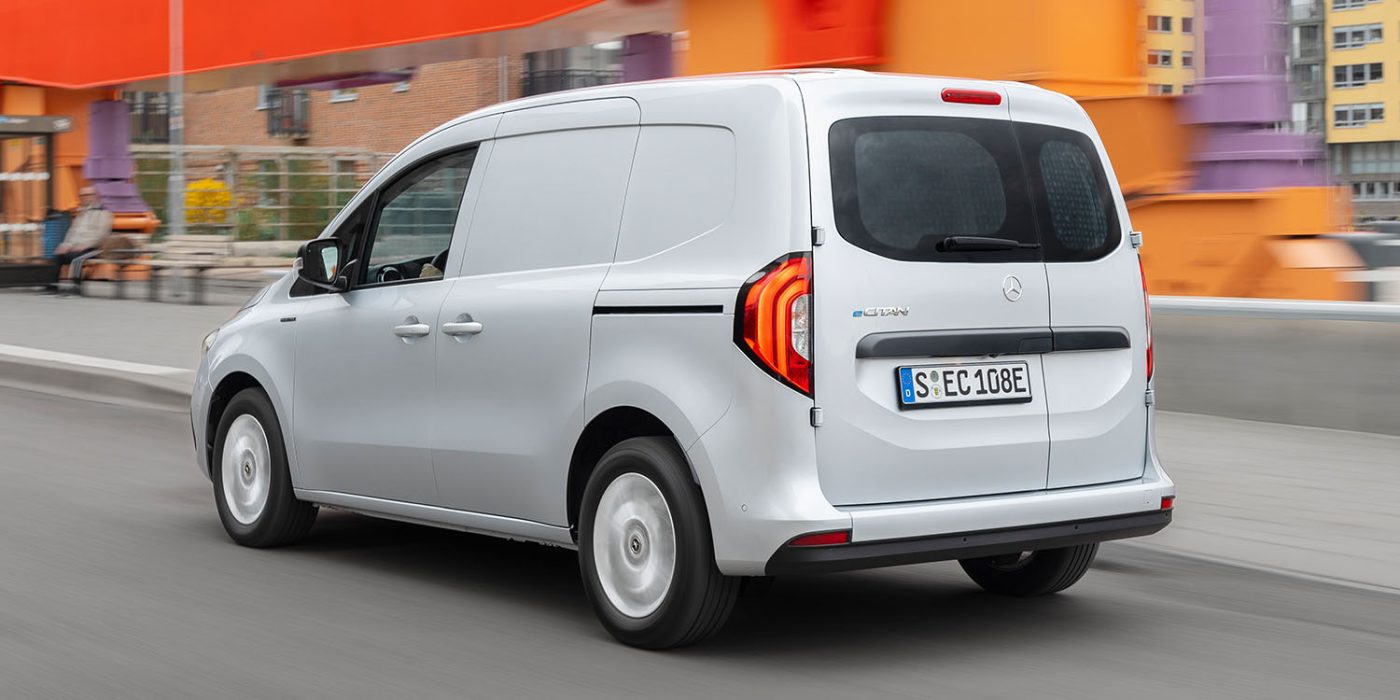
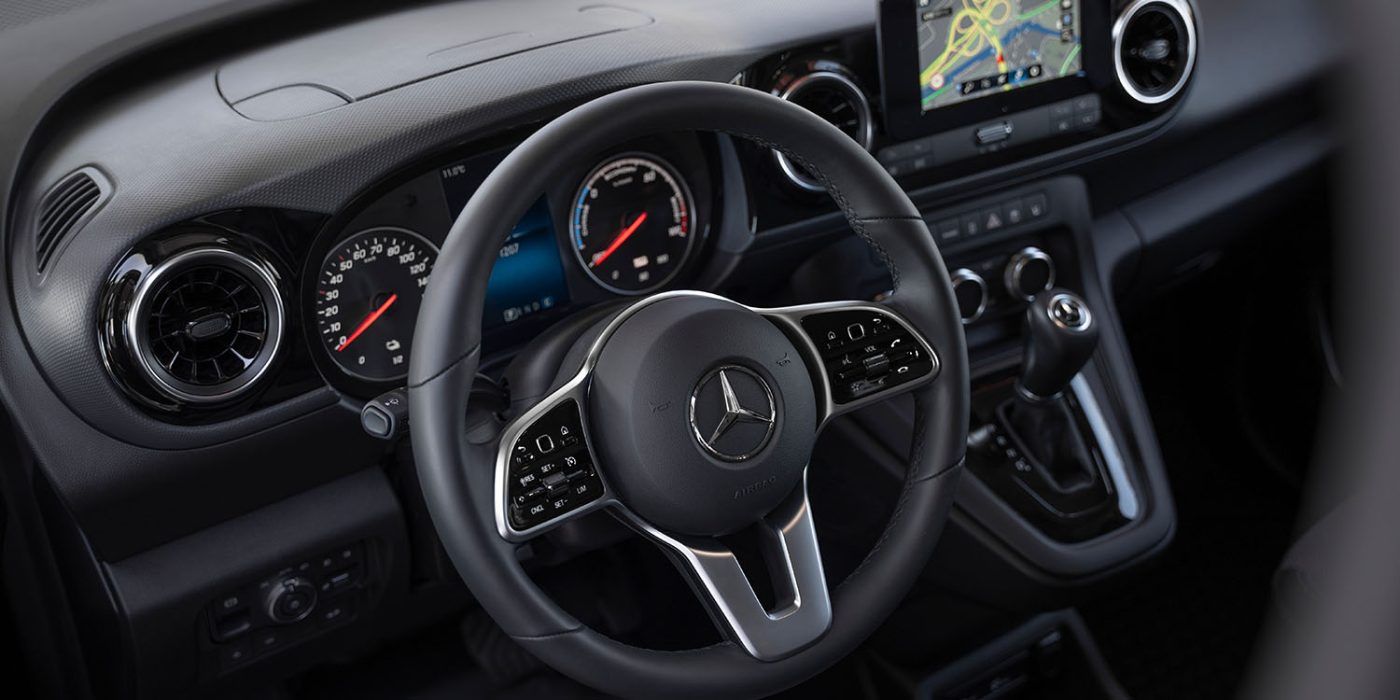
The Mercedes models also inherit the charging technology from their platform brothers: a 22 kW on-board charger is installed for AC charging – this is standard in the EQT, optional in the eCitan. An 11 kW charger is installed ex works. At a DC fast charging station (again standard in the EQT, optional in the eCitan), the 45 kWh battery can be charged with up to 80 kW in-seat. As our test of the Nissan Townstar EV panel van (comparable to the eCitan) showed, this power is only on for a short time; over long distances it remains at just over 50 kW. Consequently, the charging process from ten to 80 percent ideally takes 38 minutes. With the expected consumption of about 20 kWh/100km, the range is only a little over 200 kilometres, possibly even less in winter or on the motorway. The leisurely family must therefore plan for frequent charging breaks of almost 40 minutes. In the eCitan for inner-city delivery and service traffic, however, the battery should be sufficient.
Despite the Renault platform and the production of the two models by Renault in France, Mercedes speaks in the press release of a “newly developed small van for leisurely active everyday life”. The EQT offers “families and leisurely people an attractive entry into the fully electric world of the brand with the star”. Like its combustion engine counterpart, the T-Class, the EQT is to be characterised by its variability and high-quality equipment, according to Mercedes. An approach to stand out from the technically largely identical Renault and Nissan models.
The eCitan starts as a panel van in two lengths of 4,498 mm as a compact and with 4,922 mm in the long version. The load volume and payload are comparable to the conventionally powered Citan models. In the compact panel van it is 2.9 cubic metres and up to 544 kilograms, in the long version 3.7 cubic metres and up to 722 kilograms.
As a tourer for commercial passenger transport, it is initially available in the “compact” length, the long version will appear at a later date. The same applies to the EQT: the 4.50-metre-long “compact” version can be ordered first, with a long-wheelbase version to follow in 2023.
mercedes-benz.com, mercedes-benz.com (eCitan)

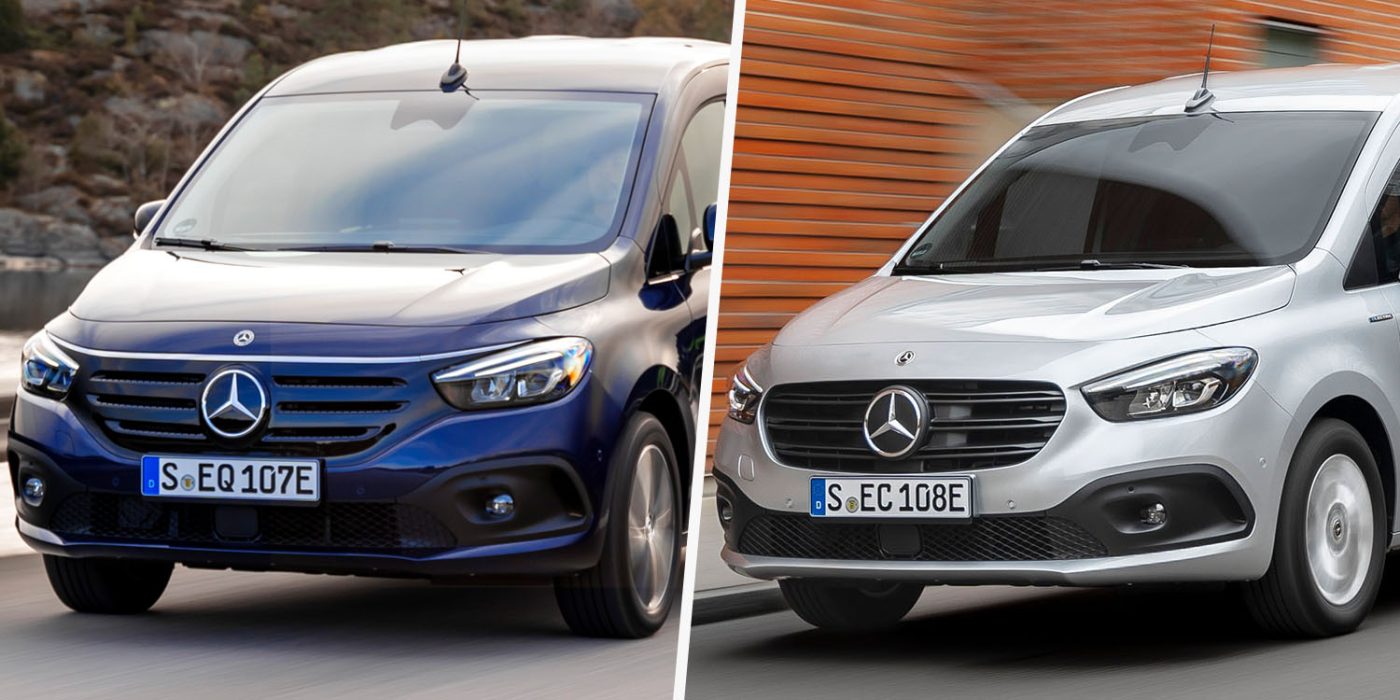



0 Comments